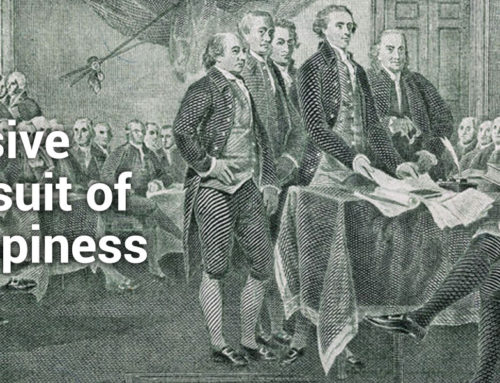We all struggle at times to find the right formula to be persuasive and to convincingly communicate our message to a targeted audience: this is true whether that audience is at a professional conference, representatives from the media, or a colleague.
Sir. Winston Churchill used to practice for hours in front of a mirror to capture the right balance of wit and insight, to make apparently impromptu speeches in the House of Lords look easy. But whatever our preparation, in conveying a complex subject, sometimes we have to venture out of our comfort zone. To communicate with non-experts, we may have to re-conceptualize the findings of the area that we have studied for many years: this can be a difficult and treacherous journey and fill us with anxiety.
How many times have you heard “I usually give this presentation in an hour but I only have twenty minutes so you’ll have to pay close attention?” At this stage the anxious presenter may turn his back to his audience and start scribbling frantically on a blackboard or, if he has mastered the ultimate crutch of Power Point, project a slide with overlapping arrows pointing to the interaction of several oddly shaped boxes that are supposed to convey expert knowledge. Unfortunately, the only message the audience perceives is “I’m smarter than you are and if what I’m saying confuses you…that just confirms that I am smarter than you.” In reality he may be hiding his own fears that manifest themselves in an “apparent” disdain for his audience, while he is actually thinking “If they don’t understand my explanation maybe I can avoid having to answer embarrassing questions and I may get out of here with my integrity intact and live to lecture another day.”
This anxiety occurs if the presenter believes that he is expected to convey “scientific truth” requiring him to delve deeply into the science of the problem. The science is the area where the presenter may feel most comfortable but unfortunately where he may lose the majority of the audience.
We have to ask ourselves, if the audience actually begins to appreciate the complexity and general import of the issues we are presenting through the use of metaphors, does that make our message somehow less worthy? Do we confuse conveying “scientific truth” with transferring useful understanding? We still may have to answer tough questions but that’s another issue.
One of the masters at communicating science was Dr. Richard Feynman and his premise was that science is not the same as truth. Science is the process of pursuing truth. It’s ok not to have all the answers and admitting to the uncertainty in science may establish a bond of trust and increase your credibility with the audience. Dr. Arthur Lupia, Professor at the University of Michigan, gave a most revealing and entertaining presentation at the 2012 Sackler Colloquia on Communicating Science where he described the biological limitations on persuasive discourse. (http://www.nasonline.org/programs/sackler-colloquia). Basically you have to establish your credibility with an audience and just putting Doctor, VP, etc in front of your name isn’t enough. You need to limit your focus on two or three critical points that will be of most value to your particular audience. The onus is on you, the presenter, to make a persuasive argument. We need to understanding that, even with areas that don’t involve science, most people can only juggle a very limited number of competing issues at a time. Any failure to present a convincing argument reflects more on the presenter than on the audience.
So why is this an important problem? Science plays an important role in understanding the risks associated with many of the great issues we confront today. The most obvious example is the threat of anthropogenic impact on climate change. Advocates and critics alike use selective scientific evidence to make their points and one result is polarized camps divided by their beliefs. Therein lies the problem. Climate change should not be a debate with winners and losers but rather a public discourse and our goal should be to define a common ground of agreement to build upon. Deriving an effective response to this issue has nothing to do with creating unchangeable beliefs. Presenting the science of this issue should inform our audience in such a way that they know that it’s OK to change their mind. We should approach public discourse as a shared journey of discovery, understanding that science is a useful tool to be used to develop a political consensus.
Unfortunately for many scientists that journey takes them away from their professional comfort zone that has its own nomenclature and concepts that require a Rosetta Stone for the majority of us to interpret.
There is no more important skill than being able to clearly and persuasively convey your message – the real challenge is to come up with the right way to craft the message. There are many challenges we face but here are a few tips to keep in mind when crafting your science-based message:
- Articulating a message does not mean dumbing down the science
- Scientific credentials in and of themselves do not equate to credibility
- The opposition is not stupid for disagreeing with you
- Admitting you don’t have all the answers is an act of courage not weakness
In future Stile Points, I will be citing examples where I find persuasive arguments and cautiously point out examples where I think the author missed his mark. I will be provocative and encourage you to comment. I have simple ground rules: 1) I welcome criticism, and 2) Just because you disagree with me doesn’t make you smarter than I am.
[hr]
As an Associate at Graffeo & Associates, Richard Chidester provides senior consulting support in client relationship management, business development, technology management and commercialization. Mr. Chidester has over 25 years of experience as a project manager and business unit manager in R&D organizations. His areas of specialty include: Developing and implementing marketing and commercialization strategies, international program negotiations, technology transfer models, valuing R&D, applying technology to energy sector industry problems, political and legal analysis, organizational consulting.



